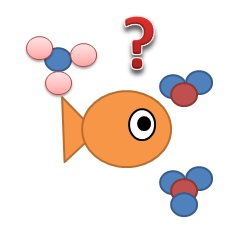Transporting pet fish to the Veterinary Hospital
Here are some tips and tricks for getting your fish to the veterinarian and being prepared for the appointment when you arrive.

Fish are ideal pets for people who don’t have a lot of space for other common pets. Choosing and decorating aquariums for fish can also brighten up a home and be enjoyable for the whole family. Watching fish in an aquarium has been linked to improving stress. Pet fish come in many shapes, sizes, and colors so you’ll need to consider what type of fish you’re ready for.
10 Reasons Fish Make Great Pets
1. Fish are known to have a calming effect on anyone who watches them.
2. Fish are easier to feed and care for than other pets; however, they do require a proper environment and knowledgeable caretakers.
3. Fish don’t develop separation anxiety or destructive behaviors when you leave them alone at home.
4. Fish are quiet — you never have to worry about them making too much noise.
5. Fish come in an infinite variety of sizes, shapes and stunning, vibrant colors.
6. Fish don’t need to be walked, they don’t require a litter box, and they’ll never leave a surprise for you on your brand new carpet.
7. Fish don’t need to be groomed or have their teeth brushed.
8. Your fish won’t make a mess in your home.
9. A fish aquarium of any size, as long it’s well maintained, can be a beautiful addition to your home.
10. Some types of fish interact with their owners, are playful, and can even be trained to do tricks.
Here are some tips and tricks for getting your fish to the veterinarian and being prepared for the appointment when you arrive.
Mycobacterium marinum, more commonly known as fish tuberculosis or fish tank granuloma in humans, is a chronic progressive fish disease that thrives in closed aquatic systems with high density of fish and warmer waters.
Routine water changes are a vital part of maintain a balanced, healthy environment in any pond or aquarium. However, there is more to performing water changes than just dumping out the old water and adding in the new. In this article we wil discuss why water changes are important and how to perform them properly to insure a healthy home aquatic ecosystem.
 Nitrogen is an important element found in nature and is critical for many biologic functions. The nitrogen cycle is the natural process by which nitrogen compounds are converted between various forms. Gathering a basic understanding of how the nitrogen cycle works can help you keep your fish or aquatic turtle healthy and happy.
Nitrogen is an important element found in nature and is critical for many biologic functions. The nitrogen cycle is the natural process by which nitrogen compounds are converted between various forms. Gathering a basic understanding of how the nitrogen cycle works can help you keep your fish or aquatic turtle healthy and happy.
Keeping an aquarium in your house can be fun and rewarding, it just takes a little work and patience. Like any pet or home project it is important to start off on the right foot and following simple rules in order to be successful. This brief article will cover the basics of setting up an aquarium in your home.
 Proper water quality is essential for maintaining healthy aquatic animals. This is true of fish, coral, invertebrates, turtles and amphibians. In most cases these animals live in the same water where they eat, drink and eliminate waste. Animals in captivity have the added challenge of living in a far smaller volume of water than their counterparts in the wild. It’s very important that their caretakers understand how to test the water and respond to any abnormal parameters. This article explains why it’s important to test several different water quality values and how they affect each other. The reader shouldn’t need to relearn past chemistry class notes to get an adequate understanding.
Proper water quality is essential for maintaining healthy aquatic animals. This is true of fish, coral, invertebrates, turtles and amphibians. In most cases these animals live in the same water where they eat, drink and eliminate waste. Animals in captivity have the added challenge of living in a far smaller volume of water than their counterparts in the wild. It’s very important that their caretakers understand how to test the water and respond to any abnormal parameters. This article explains why it’s important to test several different water quality values and how they affect each other. The reader shouldn’t need to relearn past chemistry class notes to get an adequate understanding.
Alkalinity is a measure of the water’s ability to buffer the pH to provide stability and avoid rapid changes in pH that could adversely affect the health of the animals in the water. It is one of the more important but most often overlooked parameters to monitor for healthy water quality in a system. Calcium carbonate (CaCO3) is the compound that has the most effect on alkalinity, but sodium, bicarbonate and other compounds play more minor roles. Good quality kits are available from companies like Salifert and Red Sea to test alkalinity by adding drops to the water sample in a test tube.
Ammonia, Nitrites and Nitrates measure the biological filter in a system. Elevations in any of these parameters with normal pH and alkalinity indicates a problems with biological filtration (see related article: The Importance of Water Quality Testing on this website). Mild elevations in all parameters are generally easy to fix, but there are some special cases described below that are far more concerning.

